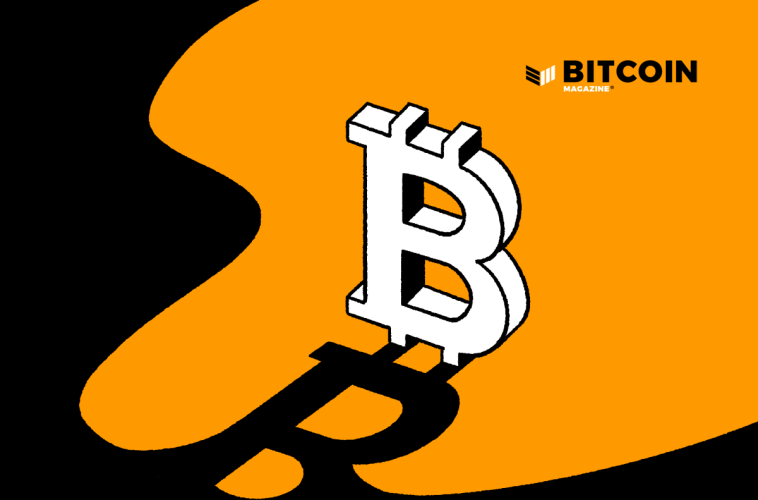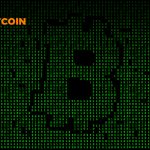A visit to Soyapango, one of El Salvador’s most impoverished slums, shows that the Bitcoin experiment isn’t reaching those who need it most.
This is an opinion editorial by Rikki, author and co-host of the “Bitcoin Italia,” and “Stupefatti” podcasts. He is one half of the Bitcoin Explorers, along with Laura, who chronicle Bitcoin adoption around the world, one country at a time.
A few days before this writing, El Salvador’s president Nayib Bukele announced an immense police operation. San Salvador’s satellite city of Soyapango was surrounded by 8,500 military and 1,500 police officers, who went searching from house to house for gang members still hiding in the area. More than 150 arrests were counted.
Soyapango represents one of the most difficult realities for the country. With 300,000 inhabitants, it is home to several “comunidades,” the name used locally to define slums or “favelas,” if you prefer.
The news of the police operation hit me hard because, only two days before, I had visited two different neighborhoods in that very city: the extremely poor Ciudad de Dios, which stands on an old garbage dump, and the violent Santa Lucia, one of the historical lairs for criminal gangs.
My visit was carefully planned well in advance and the only reason it was possible for me to even enter these places was that the “pandilleros,” the gangsters, have been hit hard by the government crackdown in recent months, a direct result of the upsurge in clashes between rival gangs that had bloodied the country again earlier this year.
Had I tried to enter a year ago, my own life would have likely been in danger. Nevertheless, as a precaution, I had a local driver, only rarely was I allowed out of the car, and we were escorted by a person known in the neighborhood who rode ahead of us on a motorcycle. Our guide was from those streets, had lived for five years under a bridge and had a history of drug addiction, from which he recovered with the help of the community.
It was an enlightening day for me and a necessary one.
Solving Extreme Poverty
My reason for visiting these places to report on them comes from a conversation I had recently with a rather famous Bitcoiner: a developer who is well educated and highly intelligent and has been in the industry for many, many years. Well, his thesis is that El Salvador is not really as poor as people would have you believe, but rather an economically-backward country where the incidence of extreme poverty is not unlike that of far more developed nations.
This viewpoint, frankly, left me in shock.
According to official data in El Salvador, 26% of the population lives below the poverty line. That is 1.7 million people.
Yet it is true that many of the Bitcoiner tourists who come here believe it is the lady selling pupusas on the street corner who is poor. She is not. That lady is an entrepreneur. She has a store, a business. The lady, despite the plain clothes creased by hard work, is lower-middle class in El Salvador. Poverty, the real kind, is hidden in huge neighborhoods made of tin houses, without running water, sewage or electricity. Invisible cities, where no one goes and that no one talks about.
This is a serious mistake.
If we want Bitcoin to succeed here, we must also improve the living conditions of these people. Because they are the ones who need it the most and because it is their poverty, as the police operation of the last few days showed us, that directly fuels crime.
The Bitcoiners who come to El Salvador dreaming of a freer nation than the one from which they escape, the entrepreneurs who want to invest here, must understand that among their priorities must be the inclusion of those living in the slums of Soyapango, otherwise it is their very future here, it is their very investments, that are in danger. Indeed, the military solution to the gang problem can only be a temporary palliative. Crime feeds on the slums. This is where bosses recruit new thugs, this is where they sell drugs and profit, this is where they live, rule and hide. If we don’t solve the problem of extreme poverty in El Salvador, the gangs will keep coming back, more dangerous and better organized than before, and El Salvador will never be a truly safe country.
The footage I shot in the slums of Soyapango is a blow to the stomach. But I think it was also necessary to show our community this side of El Salvador, which is too often forgotten.
My Last Days In El Salvador
I’m writing this during my last days in El Salvador — soon I will move to Guatemala to report on a different nation, with a completely different attitude toward Bitcoin and many local communities trying to use this technology to improve their lives. It is time, therefore, to take some stock.
As I have extensively documented, Bitcoin adoption in El Salvador is slowing down. There are many merchants who have stopped accepting BTC as a form of payment. The reasons they always give have been twofold: Bitcoin is too complicated and there is a lack of volume. Very few want to pay this way.
While we have already shown how too much complexity is to blame for the shortcomings of the Chivo wallet, the second problem is far more serious and delicate. On the one hand, there are the citizens of El Salvador who earn and spend dollars — a strong currency, not a victim of serious inflation — and they view digital payments with suspicion. On the other, however, there are the encouraging data that tell of a strong increase in tourism in this country, also related to the many Bitcoiners who come here to visit the country of BTC legal tender.
But if there are thousands of Bitcoiners coming to visit, how is it possible that the volume of BTC transactions in the streets is not increasing? Maybe we are not numerically sufficient?
Maybe. But I think the problem is also another one.
Let me give you an example: A few weeks ago, outside the Mi Primer Bitcoin graduation ceremony in the small town of Ataco, I met a Spanish gentleman who had come to the country specifically for Bitcoin. Tall and grizzled, in his 40s, he was helping this association that educates very young people in El Salvador about Bitcoin. He was an examiner, one of the “experts” called upon to assess the children’s preparation. Wearing a Bitcoin Beach cap and Bitcoin t-shirt, with a lean and tanned physique, he appeared to be a typical fanboy, in appearance.
We lingered talking outside of the school and I happened, almost by accident, to mention how I was a bit disappointed with the worsening adoption of Bitcoin among people there.
It was at this point that he started telling me how he himself, strong, in perfect Spanish, always asks whenever he buys something if he can pay in bitcoin. But when he gets an affirmative answer, he starts investigating with the merchant to figure out exactly what they are going to do with the satoshis he would be sending him. Basically, it’s an interrogation. If the poor merchant responded that they wanted to keep the sats for the future, then they will receive some from the experienced Western Bitcoiner via a Lightning transaction. But if they instead admits that they want to exchange or receive the bitcoin directly in dollars, then this Westerner gives up using bitcoin and pays directly in fiat.
Can you see how idiotic that is? It makes no sense at all.
I thought that our mission in El Salvador was to incentivize adoption as much as possible, to help these people through a new and alternative economic system. But no! Now we even demand that they be HODLers. Otherwise they are not worthy of our bitcoin. This is a creepy mindset and pure selfishness.
When I pointed out to him that the future of these people also depends on the success of bitcoin in the country and that perhaps his attitude is a bit selfish — because after all, we can sacrifice a few thousand satoshi to incentivize adoption, even if they are converted to dollars — he went on a rampage and started screeching that he lives in El Zonte and that all of his friends are the poor in the village and that he cares about the fate of them all.
Evidently, however, not enough to sacrifice a few dollars in sats.
And, mind you, there are many other people who think like this. I have seen plenty of Bitcoiners here paying in cash or with their flaming credit cards. We are all familiar with the narrative behind this gesture: “Bitcoin are not to be spent. HODL to the death. Bitcoin will be worth billions, it’s not like they’re being spent today. We wouldn’t want to end up like that fool Laszlo!”
Too bad that Bitcoin’s success in El Salvador is also linked to transaction volume and that if we win our battle in this country, the value in bitcoin’s markets will be positively affected, to the benefit of our entire community. So evidently, we all want bitcoin to gain in value, but only a few are willing to sacrifice a handful of satoshis to really contribute to the ultimate victory. How boorish and selfish.
I mean this in no uncertain terms: At the risk of angering someone, if you come to visit this country for Bitcoin and you are not willing to pay in bitcoin, do El Salvador a favor, stay home.
PS
I saw the guy again a few weeks later in El Zonte, comfortably seated, eating a shrimp cocktail, peering out to sea at Palo Verde, one of the most exclusive resorts in the village. It is one of those places that his “so many poor friends” cannot even afford to look at from a distance.
PPS
Laszlo Hanyencz is a hero and has gone down in the history books, unlike all of those who consider him a fool.
This is a guest post by Rikki. Opinions expressed are entirely their own and do not necessarily reflect those of BTC Inc or Bitcoin Magazine.




